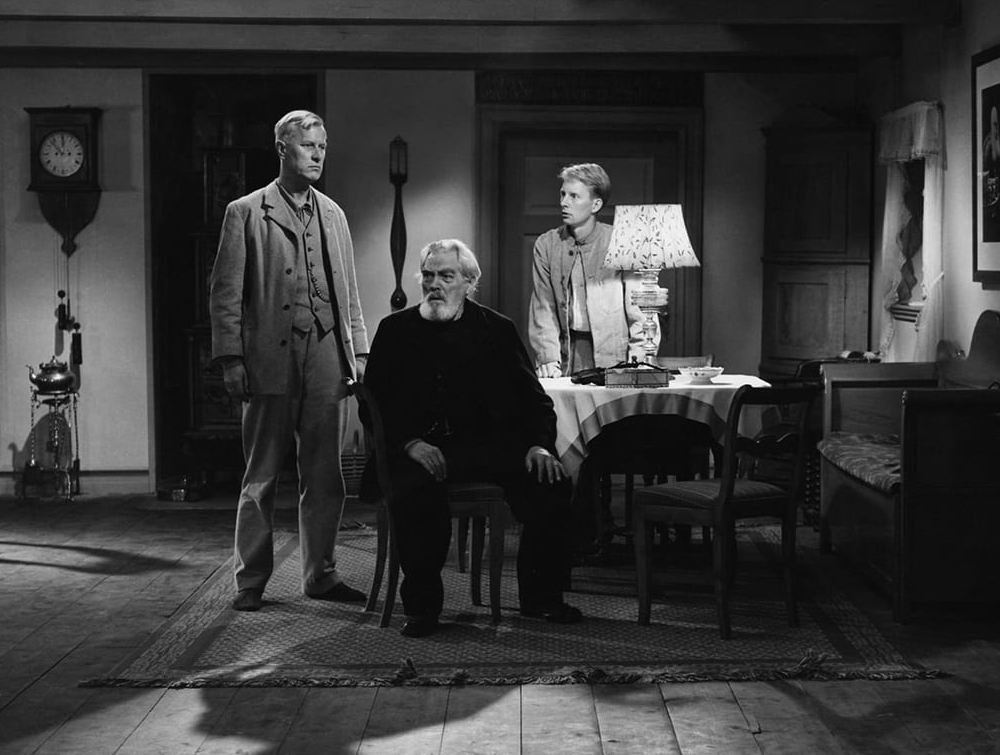
“So you think this is a kind of lifetime style for me? That is not the case. I answer that a film’s rhythm is a part of the milieu that it shows. I could not, either in Day of Wrath, which took place in the seventeenth century and in church circles besides, nor in Ordet, which takes place among West Jutland peasants, use a rhythm suitable for a Hollywood film on jet fighters. I used in Day of Wrath some long scenes, about 180 feet. I did the same in Ordet, where the longest played-through scene is 120 feet. I did that completely deliberately, and I believe that that form will become more and more accepted in films.”
Carl Theodor Dreyer1
“In editing Ordet, Dreyer continued further in a direction he had been pursuing ever since Day of Wrath. In both Vampyr and Joan of Arc the editing had been quick, frequent and, one might say, “Eisenstein-like.” But as time went on, he changed his ideas concerning editing. He felt that quick cutting had been vital for silent film but that everything had changed with sound. He felt increasingly that under the impact of sound, much of the explanation and the shock that had to be visual in the silent days was, and should be, carried by the sound track. […] The entire film was edited by Dreyer in just five days (the same length of time it took Kaj Munk to write the original play.)”
Jean and Dale D. Drum2
“The best analysis of Ordet I’ve encountered is by P. Adams Sitney3 , and in it he describes the sickbed scene, “a model of `rhythm-bound restlessness,’ that Dreyer already evoked in his 1933 essay. Apart from cutaways to Borgen, Inger’s father-in-law, rushing home on his horse-drawn wagon, the scene concentrates mainly on the movements of the doctor while Mikkel, Inger’s husband, tries to comfort her and holds a lamp to help the doctor while the midwife and another woman also lend some assistance. The second part of this sequence, Sitney adds, “is in fact the most brutal scene I know in the history of the art. The scene, which in Dreyer’s words `would have to be included in the film,’ is the abortion of Inger’s baby.” (As Sitney notes, the possibility of sacrificing Inger’s life to save the baby is never raised or discussed in either the play or the film.)”
Jonathan Rosenbaum4
- 1Dreyer interview, june 20, 1967
- 2Jean Drum, Dale D. Drum, My Only Great Passion: The Life and Films of Carl Th. Dreyer (Scarecrow Press), 2000
- 3P. Adams Sitney, “Moments of Revelation: Dreyer’s Anachronistic Modernity,” Modernist Montage: The Obscurity of Vision in Cinema and Literature (New York: Columbia University Press), 1990
- 4Jonathan Rosenbaum, Mise en Scène as Miracle in Dreyer’s Ordet (2008) available on his website: https://www.jonathanrosenbaum.net/2008/06/mise-en-scene-as-miracle-in-d…]
Johannes Allen: Avez-vous changé d’avis au sujet du rythme, depuis Dies Irae?
Carl Theodor Dreyer: A proprement parler, non, j’ai même continué à suivre la voie que je prenais dans Dies Irae, à savoir de longues scènes jouées d’une seule coulée, pas opposition aux scènes construites avec de nombreux gros plans. Je n’ai pas changé d’avis au sujet de la valeur de ces travellings que j’appelais, dans Dies Irae, des « gros plans coulants ». Mais d’un autre point de vue, il me semble qu’il est dangereux de maintenir qu’une forme rythmique unique est meilleure qu’une autre. Toutes les formes sont utilisables, quand elles s’adaptent au caractère des scènes auxquelles elles sont destinées, en accord avec le rythme propre de l’action et du milieu et avec l’intensité de la tension dramatique. Il faut, en général, se garder de parler de rythme d’autrefois et de rythme d’aujourd’hui car, dans certains cas, c’est l’ancien qui peut être le plus moderne.
Interview radiophonique avec Carl Theodor Dreyer réalisée par Johannes Allen« La réalisation d’Ordet », Interview radiophonique réalsé par Johannes Allen et transmis par la radio danoise le 27 novembre 1954, quelques semaines avant la sortie du film. Dans: Carl Th. Dreyer, Réflections sur mon métier (Paris: Cahiers du cinéma, Editions de l’etoile, 1964), collection dirigée par Jean Narboni et Alain Bergala, 88.

